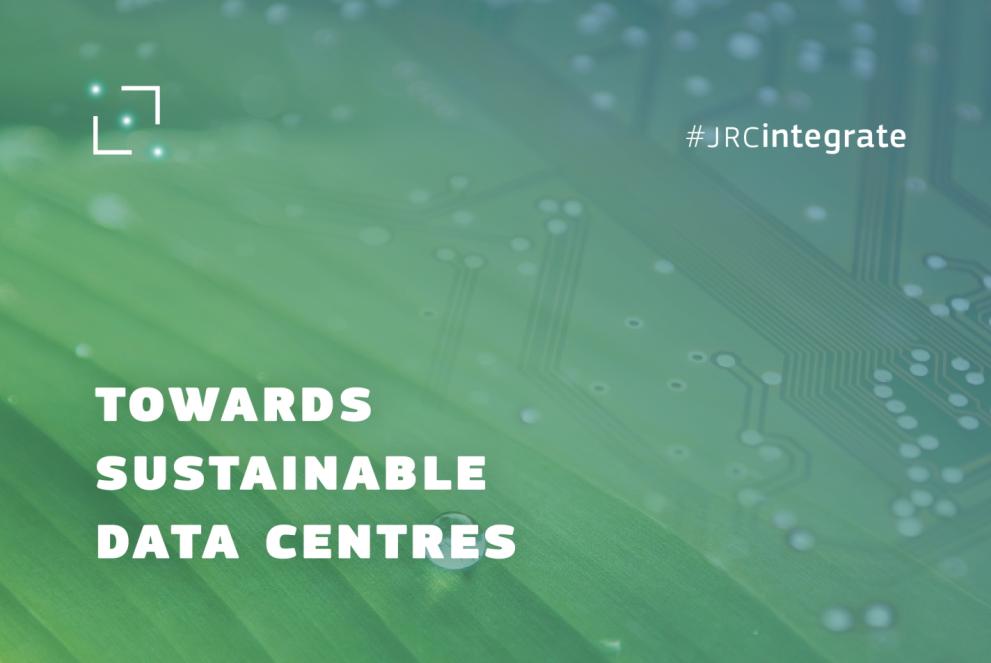
With a somewhat clichéd turn of phrase, data are often called the new oil, emphasising their crucial role in today’s digital economy.
However, data also risk reproducing not just oil’s importance, but also its poor environmental impact. Information and Communications Technology devours about 5-9% of the electricity produced in the world. Data centres alone are responsible for 2.7% of the EU’s electricity demand. By 2030, their consumption is expected to rise by 28%.
The carbon dioxide emissions of data centres are comparable to that of the aviation industry. Similarly to “flight shame” becoming common currency recently among environmentally-conscious customers, the energy use of digital technologies also came into the spotlight. The term “Bitcoin bite” was coined to call attention to the energy voracity of blockchain technology, which added to an energy demand already very high due to the explosion of digital media consumption and, of course, business and industrial use.
The JRC Code of Conduct
JRC experts, however, recognised early enough that while data centres consume vast amounts of energy, the potential to reduce their energy consumption was huge. In 2008, they launched the Code of Conduct for Energy Efficiency in Data Centres, a collection of best practices drawn up together with the data centre industry and independent experts to improve the energy efficiency of data centres.
450 data centres have already joined the Code of Conduct. Three of them, SKY, ENGIE (now Equans), and Facebook received the 2017 EU Code of Conduct Award for Energy Efficiency in Data Centres.
Equans, the data centre near Maastricht Airport whose manager was interviewed today, managed to trim back their all-important PUE score to 1.1-1.3. PUE stands for power usage efficiency and is the ratio of the total energy use of a data centre, which encompasses consumption by cooling, lighting, or other secondary needs, and the energy only used for computing. The perfect, unattainable score would be 1.0.
Best practices to reduce energy use
The centre made good use of best practices recommended by the JRC. Cooling, which can account for up to 40 % of the total energy consumption of a data centre, was reduced as new technologies can withstand higher temperatures without any detrimental effects. “Previously, you needed a coat, now you can walk into a data centre with your shorts on”, Jos Molnar from Equans explains.
Data centres benefit from other JRC-approved technical solutions as well. Hot aisle contained airflow, one of these, relies on arranging server racks so that hot air exhausts are face-to-face, reducing cooling needs. Adiabatic cooling uses changes in air pressure to reduce temperatures. Free-cooling employs crisp outside air. More efficient use of the servers and software, digitalisation, and cloud computing are helpful, too. The full list of tips can be found in the latest Code of Conduct.
Equans, which has the energy needs of a small village, made crucial steps towards sustainability, by significantly enhancing energy efficiency and using 100% green energy. In the future, they will forge ahead by starting to produce their own sustainable energy, setting up solar panels in their parking lot. They will also continue to chase incremental efficiency gains, for example through modern technologies such as artificial intelligence.
Others must follow in their footsteps, making these best practices the standard approach.
EU policy actions
The Commission has also addressed the issue of data centre energy use through other actions and policy instruments, among which an important number of studies and research projects, the regulation on the Ecodesign of servers and data storage products, as well as the EU Taxonomy for Sustainable Finance, which includes criteria for data centres. The Action plan for the Digitalisation of the Energy sector, due in September 2022, will have a chapter dedicated to the energy consumption of information and communications technologies, where a number of new policy actions will be announced
Details
- Publication date
- 14 July 2022
- Author
- Joint Research Centre
